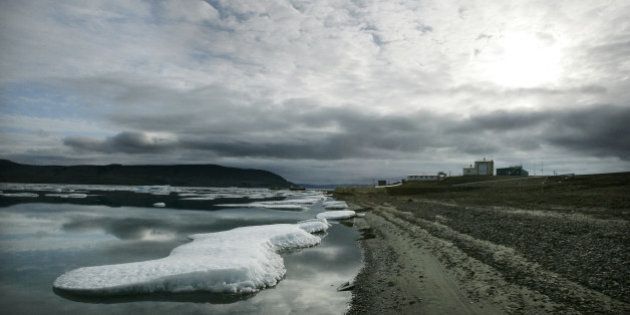
Written by Farid Sharifi, Senior Specialist, Renewable Energy, WWF-Canada
Diesel fuel has long been the primary source of energy in Arctic communities. In the harsh environs of the Arctic, diesel fuel is, above all else, reliable - an important characteristic in 24-hour darkness and -40°C temperatures. Unfortunately, this reliability has high logistical, financial and environmental costs, hindering the self-sufficiency and independence of northern and remote communities.
A new WWF-Canada report shows that these sacrifices in the name of reliable heat and light may no longer be necessary.
Our research into habitat-friendly renewable energy from solar and wind shows that there is a cost-effective opportunity to reduce reliance on fossil fuels in Nunavut. This is an important first step to supporting energy stability in the north without risk to marine environments.
To date, there are very few renewable energy projects in Nunavut, and in most cases the wind turbines or solar panels that have been installed are not large enough to make a substantial dent in diesel use. Some reports and newspaper articles have suggested that the incredible cold and harsh conditions make Nunavut an unlikely host for more substantial projects, but this isn't the case in Alaska, where large-scale and successful projects face similarly severe conditions.
With Alaska's successes in mind, we are working to catalyze the transition to renewable energy in two Nunavut communities, working with communities, utility companies and governments to demonstrate to all Canadians that habitat-friendly renewable energy is reliable and robust enough to power our future.
In March, Prime Minister Trudeau and President Obama agreed that reducing reliance on diesel fuel in the Arctic was a priority for both Canada and U.S. This was presented as a priority for meeting climate change reduction goals and protecting important marine areas, but it also fits into international Sustainable Development Goal commitments to deliver energy security to people around the world.
Since reliability is a top priority for communities, we need to make sure we're putting the proper technologies in the proper location. To do that we needed to know a bit more about the communities. How much money were they spending on diesel fuel? How old are their generators? What's the energy demand of that community? Is it projected to go up or down in the future? Just how much potential is there for solar and wind energy in each?
To gather all this information, we worked with the Waterloo Institute for Sustainable Energy (WISE), a world-class clean-energy research institute, and looked at the 13 Nunavut communities that were considered to be the most promising for renewable energy based on wind and solar potential, population and anticipated costs. WISE gathered and analyzed data to predict what the use of renewable energy sources in northern community grids could achieve.
Not only did we find good potential for renewable energy generation in Nunavut communities, but we also found that investment in renewables in many communities made good financial sense. In five of the Nunavut communities studied, an initial investment in renewable energy would be paid for by reduced diesel energy costs.
These results were even more positive than we had hoped at the outset to the project.
It's clear there are significant opportunities for renewable energy in Nunavut. Our next steps will be to conduct a more in-depth study of the five identified communities, including a workshop this fall, in order to validate the outcomes with communities and stakeholders and collaboratively identify two communities for installing renewable energy.
Follow HuffPost Canada Blogs on Facebook